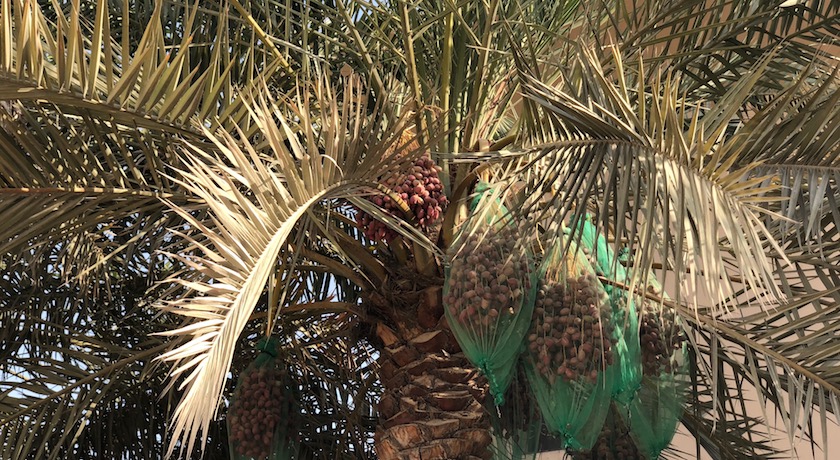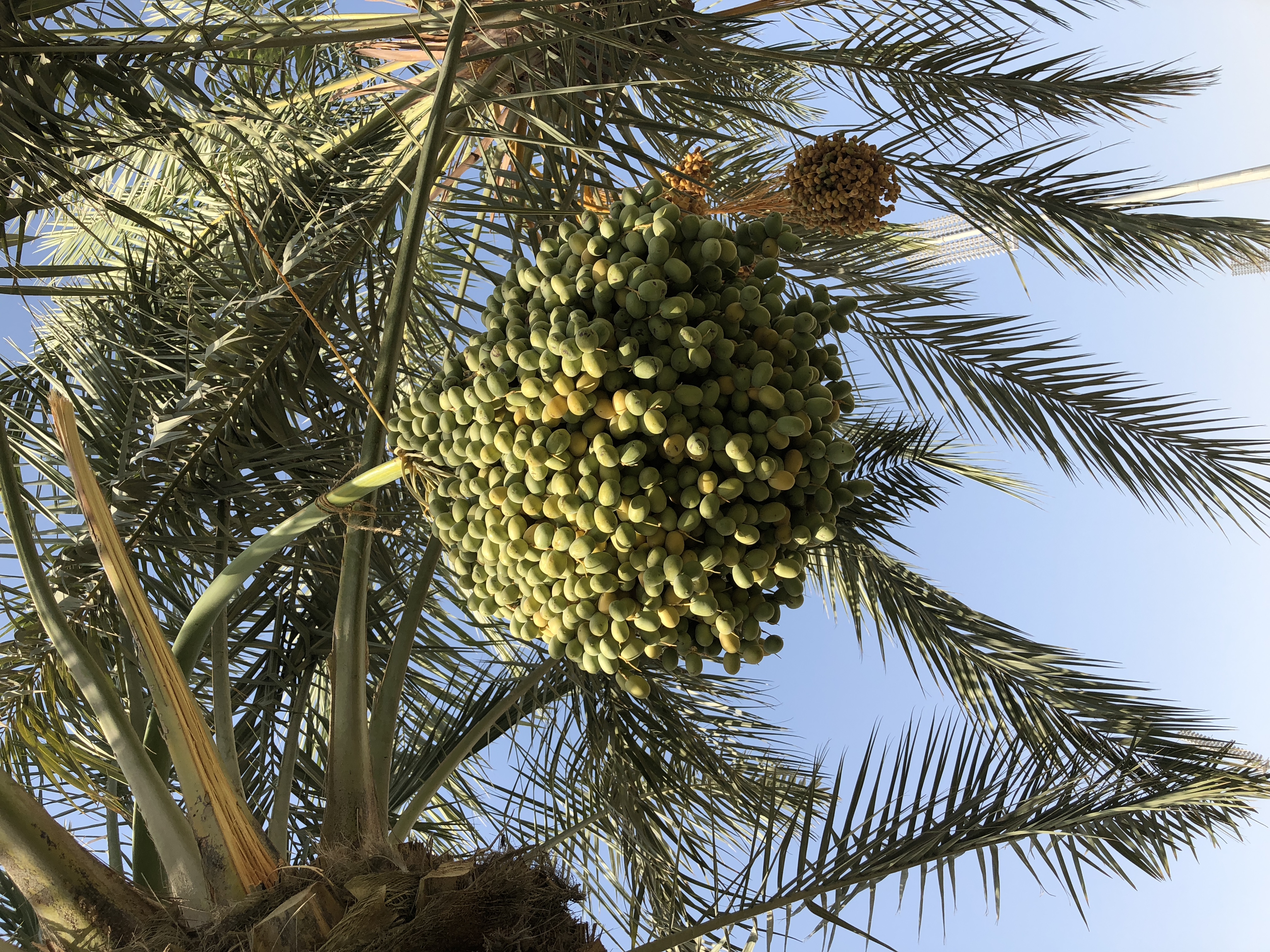The humble date, offering a sweetness to every day life

Throughout Qatar at this time of the year (summer), a unique crop or cultivation is taking place. The fruit being grown is the local palm date, or phoenix dactylifera being the tree and its offerings truest name.
In today’s 21st century, it is still a wonderment to me how this ancient fruit continues to flourish in what must be considered as harsh and extremely HOT conditions. The naturally sweet and quite distinctive fruit comes from the hardy Date Palm Tree, which can be seen all over Qatar from the new city we call West Bay (see video link) across to old town Doha (Al Mansoura and Al Muntazah), and from one end of the country (Al Khor) to the other (Mesaaid).
The temperature during a Qatari summer soars to intense heights, on average sitting around 36-38 degrees at night and up to 45/48 degrees PLUS during the day (and yes it has been known to hit over 50 degrees often!), yet this stoic tree with its distinctive shape and blessed fruit still survives.
Luckily at this time of year nature has its own natural resource to combat such heat intense by blessing us all with high humidity, which of course is hard to live with BUT it does helps the whole country to literally ‘sweat’ at night, providing moisture and the much yearned drink for many local ‘desert’ plants, who by the way are well designed by the shape of their leaves to capture this natural blessing. Each tree will also have a powerful root system digging deep into the soft sandy terrain, sapping water wherever it can find it.
Nature is always tenacious and admirable in its will to survive.
The date palm commences its growth to bare fruit during these hot summer months, flowering earlier in the cooler months, which in turn become the hard green bunches hanging in 4-foot-long clusters below their canopy of bluish-green fronds, and in a matter of months will turn towards a pale gold colour and eventually to the familiar, ‘ready to eat’ tan brown.

I think it is useful to remember that dates ripen in four stages, and these stages are referred to throughout the world by their Arabic names Kimri (unripe), Khlal (full-size, crunchy), Rutab (ripe, soft) and Tamr (ripe, sun-dried), and I think it is lovely to still see and hear these cherished traditional names being used by those in the commercial date trade of today.
All over the country, once the date starts to turn from green to pale yellow, this is the time that the fruit gets bagged and protected from feeding birds or other native animals (see cover photograph and top image). This is usually a hands on process, either by a local man climbing a ladder or by the traditional method of rope around the feet and crawling your way up, very much in keeping with the way the natives around the globe climb coconut trees.
Wonderfully, during my 18 years in Qatar, I have never seen any ‘scrumping’ (stealing) humans raiding the trees (as you often may do in other countries of the world). It is as if this ancient tree with its mystical fruit is somehow always revered and highly respected on all levels, from a labourer toiling the road to the owner of the grand house.
The Palm Tree is centuries old, therefore, she demands respect, and in Qatar, respect to ancient traditions is very much part of daily life.
Do please check out a few of my date recipes, which I believe capture an essence of Arabia for you, wherever you may reside. I use them whole, fresh, dried or as a syrup (I even buy the commercially prepared date syrup in the market as you can get some fantastic, healthy brands). The date has a very favourable natural sweetness which offers a healthy sweet alternative to cane sugar.
Date and Orange Cake Date and Orange Tea Cake
Moroccan Carrots with Dates Moroccan Carrots with Dates
Steak Barley, Date and Sumac Salad Steak Barley, Date and Sumac Salad



